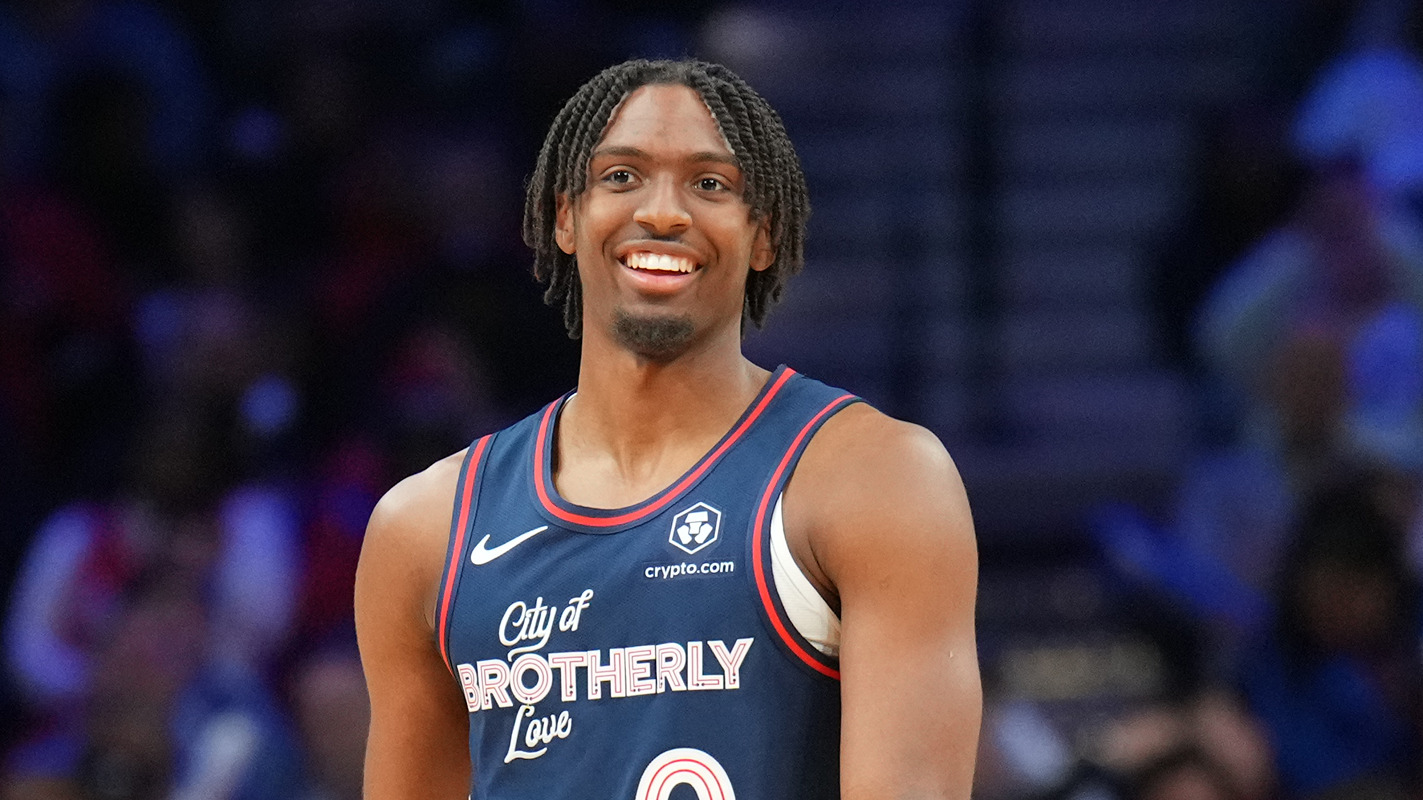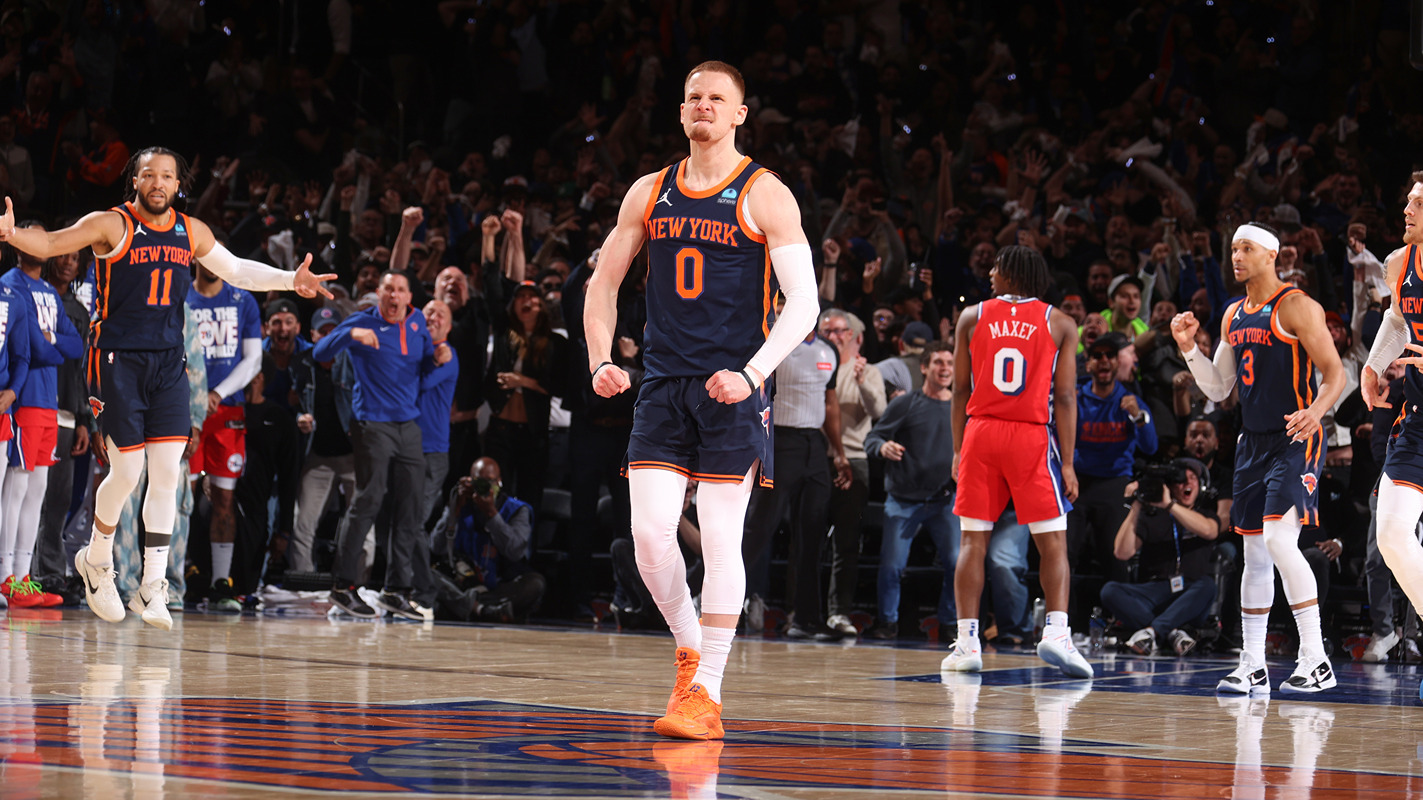If they have their way, the Philadelphia 76ers are going to spend an absolutely absurd amount of money this off-season.
Watching Twitter this post-draft week, the Sixers have been a reported suitor of enough free agent-wings to host their own reality show. Every couple hours, it's been someone new: Harrison Barnes. Dion Waiters. Allen Crabbe. Courtney Lee. George Lynch. Where in prior summers, we'd need to solicit a report from Sam Hinkie's cell phone company to prove that he had, in fact, made a call at some point in the summer, now the Colangelos are basically leaving out their wishlists with milk and cookies for the NBA's top rumormongers. It'll take some getting used to.
Needless to remind, it's been a Furkan minute since the last (and really only) notable free-agency contract handed out by the Hinkie-era Sixers. That seems certain to change: The Sixers aren't going to get every last chocolate microscope they want rubber-stamped, but they appear determined to get at least one, if for no other reason to prove that they can and will. Sounds sporting, but there's a dilemma of sorts at the heart of this pursuit:
1. All of these players are going to be very expensive.
2. None of them are actually that good.
Let's consider these players by the standard of Player Efficiency Rating, one of the closest things we have to a useful all-in-one stat for player-evaluation in the NBA. Not a perfect statistic by any means, and one that tends to be particularly unkind to wings who don't offer much in the ways of rebounding, playmaking, or getting to the free-throw line. But generally speaking, a star-level PER in the NBA is around 20, whereas an average player is around 15. Any idea how many seasons of 15.0-or-higher PER those above players have posted, combined?
Ze-ro.
That's right: Not a one of 'em have ever even managed a league-average PER. They've also never made an All-Star team, averaged 15 points a game, or threatened to lead the league in any meaningful statistical category besides Games Played or Turnover Percentage. (Barnes did win a championship ring in '15 with the Golden State Warriors, but after his 5-32 shooting slump to end this year's finals, he may have been asked to give it back.) These are not stars. Calling them character actors might be generous.
Philadelphia 76ers
Complete coverage of the Philadelphia 76ers and their rivals in the NBA from NBC Sports Philadelphia.
Yet in this upcoming offseason, some (if not all) of them will be paid sums of money that would make Joe Johnson blush. The reason for this is simple: There's too much money to go around, and not enough players to give it to. The salary cap spike — forecasted on the NBA horizon for as long as a Game of Thrones winter — that hits this off-season will raise the cap from $70 million to somewhere in the 90s, which means a team like the Sixers (whose most expensive player is barely making 1/15th of that amount) can basically afford to hand out fat multi-year contracts this summer like tips at a casino.
Optimally, they'd give one of those to Kevin Durant, the former MVP still in his prime hitting unrestricted free agency for the first time in his career. But there's only one Durant, he ain't coming to a ten-win team, and it's a steep drop-off in the caliber of available players after him. A lot of those dudes are big men, and tempting as it may be to sign Dwight Howard to be our emergency center in case Joel Embiid and Nerlens Noel get in foul trouble, it's probably not the best expenditure of resources. Not nearly enough of those dudes are point guards, which the Sixers desperately need, but which — unless Mike Conley is a much bigger Hall & Oates fan than we realize — they'll probably have better luck filling through the draft or in trade.
So that leaves the non-Durant wings. There's a decent amount of those, and the Sixers could certainly use a couple, but so could at least half the other NBA teams, a lot of whom can offer markets, teammates, and cultures that currently hold a lot more sway league-wide than our Ballers. To get one or more of them, the Sixers will have to offer the one thing they do have in superior supply to the rest of the league, and that's money. So when a player who you'd expect to sign a four-year, $30-40-million contract a couple offseasons ago gets offered a deal by the Colangelos more in the range of four years, $70-$80 million... don't be surprised.
This, of course, seems like a bad idea. Why would you pay $70-$80 million for a player that's not even that good? It seems intuitively, overwhelmingly stupid. And certainly, it's not without its stupidity. But it's not without its logic, either.
The most important distinction to make here is between a player that isn't that good, and a player that hasn't been that good. With the exception of the 30-year-old Lee (and, uh, Lynch), all the players mentioned above are still very early in their developmental curves, each 25 and under — Crabbe only has one season of regular rotation minutes under his belt. When you shell out big money for a player at the end of their first contract, you do so in the hopes of purchasing their breakout years, a smart bet that the Raptors made with DeMar DeRozan, the Grizzlies made with Mike Conley, and the Sixers made with Jrue Holiday — all contracts that were controversial at the time, but look like tremendous bargains today, as the players involved blossomed into All-Star-caliber talents.
Which leads to the next-most-important point to consider here: $15-20 million a year in 2016 will not look the same as $15-20 million a year in 2019. As high as the cap is this year, it's reported to climb even higher next season, to over triple digits: It may recede some from there, but yeah, big contracts are gonna get even bigger in the days to come. What seems to be an impossibly bloated contract now may look like a steal by the time it's over — especially since the Sixers are targeting younger players, whose production is less likely to fall off a cliff and represent a total sunk cost, as is a risk with older players.
Then, there's the significantly less quantifiable factor of simply needing guys to get other guys. Marquee free agents and trade targets may eventually love Joel Embiid and Ben Simmons, but they're not going to want to come to a team with a bunch of green big men and no reliable perimeter players. Dion Waiters and Harrison Barnes may not tip the balances there in any meaningful way, but they're veteran players with good pedigrees and recognizable names. You need at least a couple of those guys before someone like Durant will even think of coming to the table with you. (Not to mention that there's a salary floor that the Sixers, at $33 million in contracts for next year not counting this year's draft picks, are about $50 million below, though the actual importance of hitting that floor is overstated and in fact relatively minimal.)
Finally, there's the matter that the NBA is all contextual, and a lot of what these wings provide doesn't necessarily show up in a stat like PER. Even if their only NBA-level skills are to sink open three-pointers and not give up any at the other end — the prototypical 3-and-D wing — that can prove invaluable for a team in terms of offensive spacing and defensive scheming. A player like Crabbe or Lee may never become a star, but he can allow the stars your team does have to reach something close to their full potential. That's nearly as important.
Which isn't to say that all these swingmen the Sixers are thirsting for are of equal merit. Personally, of the bunch mentioned, I'd be most excited for Barnes (who's never really shown what he can do as a first or second option) and Crabbe (who offers decent consistency and seems like he can only get better), while I'd only sign Lee if the contract was kept short, and only Waiters if Brett Brown just really needed the belly laughs. I'd also like to see the Sixers at least try for the Magic's Evan Fournier and the Hawks' Kent Bazemore, who are a little further along in their games than a couple of those dudes, but who might — somehow — already be out of the Sixers' league.
And of course, this also isn't to say that the Sixers in any way need to spend big this off-season. They'd probably be just as well off going the Hinkie route, waiting to land a disgruntled superstar or be a third team and/or dumping ground for interesting trades, maintaining flexibility for future extensions (and free-agent signings that actually, definitely matter), and letting the guys they have grow together at their own pace. But there is justification to doing it this way, and since the Colangelos are tripping over each other to get one of these deals done, it's best made peace with now. We're gonna pay someone a lot more money than it seems like they deserve, and it's probably going to be fine.



